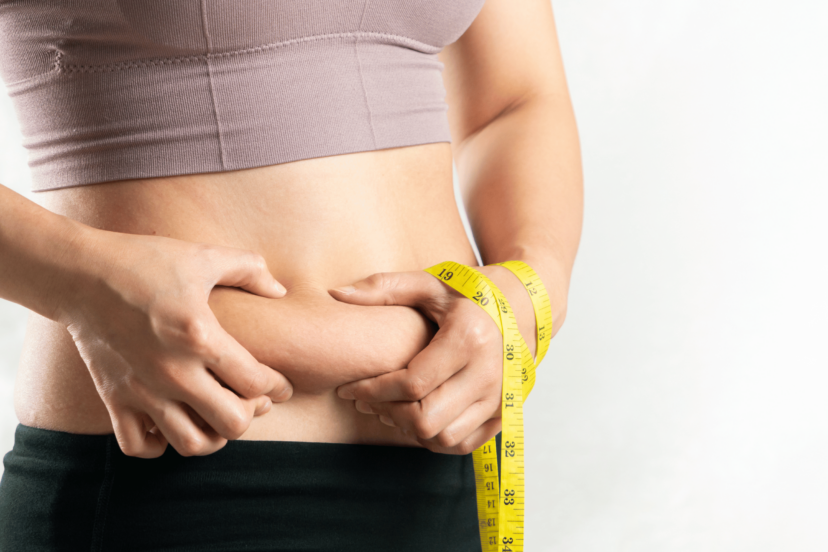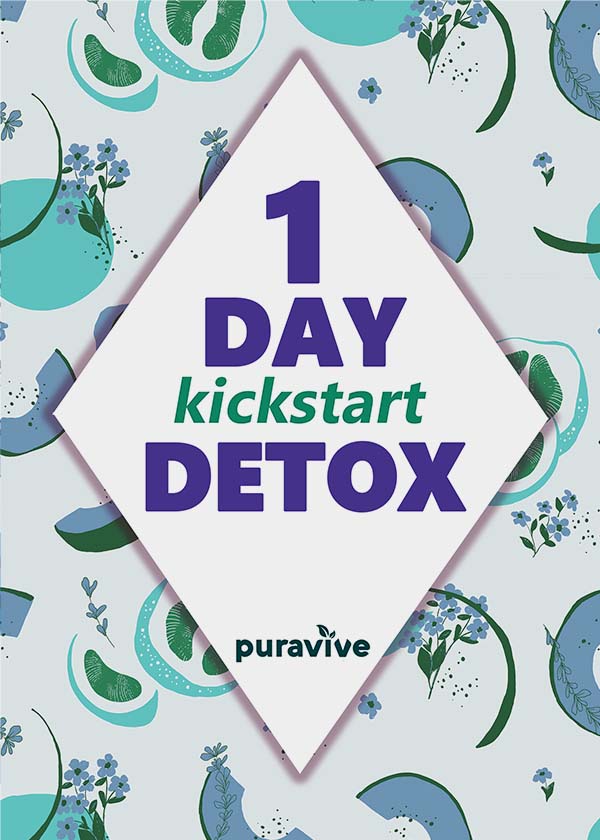How To Get Rid Of Upper Belly Fat: Your Comprehensive Guide
Are you frustrated by the stubborn layer of fat that seems to cling to your upper abdomen no matter what you do? You’re not alone! Upper belly fat can be particularly stubborn and challenging to eliminate, but with the right strategies and lifestyle changes, you can achieve a trimmer waistline and improved overall health.
In this detailed guide, we’ll explore effective methods on how to get rid of upper belly fat (with and without exercise), empowering you to take control of your body and achieve your fitness goals.
Make sure to read till the end, because we’ll introduce you to a new scientific discovery that could be your aha moment in your weight loss journey.
Understanding Upper Belly Fat: Unpacking the Problem Area
Before we delve into solutions, let’s take a moment to understand what causes upper belly fat and why it can be so challenging to get rid of. Upper belly fat, also known as visceral fat, accumulates around the abdominal organs and is associated with various health risks, including heart disease, type 2 diabetes, and metabolic syndrome.
Factors such as genetics, diet, sedentary lifestyle, stress, and hormonal changes can contribute to the accumulation of fat in this area, making it particularly stubborn and resistant to traditional weight loss methods.
How To Get Rid Of Upper Belly Fat: Why Spot Reduction Matters
When it comes to losing upper belly fat, many people wonder if spot reduction is possible. While you can’t specifically target fat loss in one area of your body through exercise alone, incorporating targeted exercises and lifestyle changes can help reduce overall body fat percentage, including in the upper abdominal region.
By combining cardiovascular exercise, strength training, and a healthy diet, you can create a comprehensive approach to fat loss that yields results over time.
Cardiovascular Exercise: Sweating Away the Upper Belly Fat
Cardiovascular exercise, also known as cardio, is a crucial component of any fat loss plan, including targeting upper belly fat. Activities like running, cycling, swimming, and brisk walking help elevate your heart rate, burn calories, and improve overall cardiovascular health.
Aim for at least 150 minutes of moderate-intensity cardio or 75 minutes of vigorous-intensity cardio per week to reap the fat-burning benefits and support your weight loss goals.
Strength Training: Building Muscle to Boost Metabolism
In addition to cardio, incorporating strength training exercises into your routine is essential for targeting upper belly fat. Strength training helps build lean muscle mass, which in turn boosts your metabolism and increases calorie expenditure, even at rest.
Focus on compound exercises like squats, deadlifts, lunges, and chest presses to engage multiple muscle groups simultaneously and maximize fat-burning potential.
Core-Specific Exercises: Strengthening and Toning the Abdominals
While spot reduction isn’t possible, targeting the muscles in the abdominal region can help improve muscle tone and definition, giving the appearance of a flatter stomach.
Incorporate core-specific exercises like planks, crunches, bicycle crunches, and Russian twists into your routine to strengthen and tone the muscles of the upper and lower abdomen, obliques, and lower back.
The Role of Nutrition: Fueling Your Body for Success
In addition to exercise, maintaining a healthy and balanced diet is crucial for reducing upper belly fat and achieving your weight loss goals. Focus on consuming whole, nutrient-dense foods like fruits, vegetables, lean proteins, whole grains, and healthy fats while limiting processed foods, added sugars, and refined carbohydrates. Pay attention to portion sizes and practice mindful eating to avoid overeating and support fat loss efforts.
Hydration: The Unsung Hero of Fat Loss
Proper hydration is often overlooked but plays a significant role in fat loss and overall health. Drinking an adequate amount of water throughout the day helps support digestion, metabolism, and nutrient absorption while keeping you feeling full and satisfied.
Aim to drink at least eight glasses of water per day, and consider swapping sugary beverages for water or herbal tea to reduce calorie intake and support weight loss.
Stress Management: Taming the Cortisol Beast
Stress can wreak havoc on your waistline by increasing cortisol levels, which can lead to fat storage, particularly in the abdominal area.
Incorporate stress-reducing activities like meditation, yoga, deep breathing exercises, and spending time in nature into your daily routine to promote relaxation, reduce cortisol levels, and support fat loss efforts.
Quality Sleep: The Ultimate Fat Burner
Getting enough quality sleep is essential for overall health and well-being, including fat loss. Lack of sleep disrupts hormone levels, including those that regulate appetite and metabolism, leading to increased cravings, decreased energy levels, and weight gain.
Aim for seven to nine hours of quality sleep per night, and prioritize establishing a consistent sleep schedule and creating a relaxing bedtime routine to optimize sleep quality.
Consistency and Patience: Keys to Success
When it comes to losing upper belly fat or any fat for that matter, consistency and patience are key. Remember that fat loss takes time and effort, and there are no quick fixes or shortcuts.
Stay committed to your exercise and nutrition plan, celebrate small victories along the way, and trust the process. With dedication and perseverance, you’ll gradually see progress and achieve your goals.
Your Path to a Trimmed Waistline
Getting rid of upper belly fat requires a multifaceted approach that combines targeted exercises, a balanced diet, proper hydration, stress management, quality sleep, and consistency. By incorporating cardiovascular exercise, strength training, core-specific exercises, and healthy lifestyle habits into your routine, you can effectively reduce overall body fat percentage, including in the upper abdominal region. Remember to listen to your body, stay patient, and celebrate your progress along the way. With dedication and perseverance, you can achieve a trimmer waistline and improved overall health.
Have you tried everything mentioned above, but have had little or no results? Well, maybe it’s not your fault.
FAQs about How To Get Rid of Upper Belly Fat:
- How to get rid of upper belly fat with specific exercises?
While you can’t spot-reduce fat in one area, incorporating core-specific exercises can help strengthen and tone the abdominal muscles, giving the appearance of a flatter stomach. - How long will it take to see results from my efforts to lose upper belly fat?
Results vary depending on individual factors such as genetics, diet, exercise routine, and lifestyle habits. With consistent effort and dedication, you can expect to see noticeable improvements in a matter of weeks to months. - Are there any specific foods that can help reduce upper belly fat?
While no single food can magically melt away belly fat, focusing on a balanced diet rich in whole, nutrient-dense foods like fruits, vegetables, lean proteins, and healthy fats can support fat loss efforts. - Can stress contribute to upper belly fat?
Yes, chronic stress can lead to increased cortisol levels, which can promote fat storage, particularly in the abdominal area. Incorporating stress-reducing activities into your routine can help manage stress levels and support fat loss efforts. - How to get rid of upper belly fat without exercise?
While exercise is an essential component of any fat loss plan, particularly targeting specific areas like the upper abdomen, making dietary changes and adopting healthy lifestyle habits can also contribute to fat loss. However, combining exercise with a balanced diet yields the best results for long-term success.
If you have a busy lifestyle, you don’t have time (or don’t want) to exercise but want to see astonishingly quick results, then we recommend this.
References:
- “Effect of Exercise Training Intensity on Abdominal Visceral Fat and Body Composition” by Ross et al. (2015): This study investigated the impact of different exercise intensities on abdominal visceral fat. The researchers found that high-intensity interval training (HIIT) was particularly effective in reducing visceral fat compared to moderate-intensity continuous training (MICT), highlighting the importance of intensity in targeting stubborn belly fat.
- “Dietary Interventions for Weight Loss and Abdominal Fat Distribution in Overweight and Obese Adults” by Johnston et al. (2014): In this comprehensive review, the authors evaluated various dietary interventions for weight loss and abdominal fat distribution. They found that low-carbohydrate diets, Mediterranean diets, and plant-based diets were effective in reducing visceral fat and improving overall body composition in overweight and obese individuals.
- “Impact of Sleep Duration on Abdominal Fat Accumulation: A Systematic Review and Meta-Analysis” by Wu et al. (2018): This meta-analysis examined the association between sleep duration and abdominal fat accumulation. The findings revealed that both short and long sleep durations were associated with increased visceral fat deposition, emphasizing the importance of adequate sleep for maintaining a healthy body composition.
- “Effect of Stress on Abdominal Fat Accumulation: A Systematic Review and Meta-Analysis” by Chrousos et al. (2016): Stress is known to influence abdominal fat distribution, and this systematic review explored the relationship between stress and visceral fat accumulation. The meta-analysis revealed a significant association between chronic stress and increased abdominal fat, underscoring the importance of stress management in weight management strategies.
- “Role of Resistance Training in Reducing Abdominal Fat: A Systematic Review and Meta-Analysis” by Willis et al. (2012): This meta-analysis evaluated the effects of resistance training on abdominal fat reduction. The findings indicated that resistance training, particularly when combined with aerobic exercise, was effective in reducing visceral fat and improving body composition, highlighting the importance of incorporating strength training into fat loss programs.
- “Effect of Dietary Fiber Intake on Abdominal Fat: A Systematic Review and Meta-Analysis” by Thompson et al. (2019): Dietary fiber is known to influence satiety and energy intake, but its impact on abdominal fat accumulation was examined in this systematic review. The meta-analysis demonstrated a significant inverse association between dietary fiber intake and visceral fat deposition, suggesting that high-fiber diets may aid in reducing abdominal fat.
- “Impact of Menopausal Hormone Changes on Abdominal Fat Distribution: A Longitudinal Study” by Davis et al. (2014): Menopausal hormonal changes are associated with shifts in body fat distribution, particularly towards the abdominal region. This longitudinal study followed menopausal women over time and found that hormonal fluctuations were linked to increases in visceral fat, highlighting the importance of hormone management in women’s health.
- “Effect of Green Tea Extract Supplementation on Abdominal Fat Loss: A Randomized Controlled Trial” by Hursel et al. (2013): Green tea extract is purported to have various health benefits, including fat loss. This randomized controlled trial investigated the effects of green tea extract supplementation on abdominal fat loss and found that participants who consumed green tea extract experienced significant reductions in visceral fat compared to the placebo group.
- “Role of Gut Microbiota in Abdominal Fat Accumulation: Current Evidence and Future Directions” by Turnbaugh et al. (2019): Emerging research suggests that gut microbiota play a role in regulating metabolism and body composition. This review summarized current evidence on the relationship between gut microbiota composition and abdominal fat accumulation, highlighting potential avenues for future research and therapeutic interventions.
- “Effect of Intermittent Fasting on Abdominal Fat Reduction: A Systematic Review and Meta-Analysis” by Harris et al. (2020): Intermittent fasting has gained popularity for its purported health benefits, including weight loss. This systematic review and meta-analysis examined the impact of intermittent fasting on abdominal fat reduction and found that various fasting protocols were associated with significant reductions in visceral fat, suggesting that intermittent fasting may be an effective strategy for targeting stubborn belly fat.





